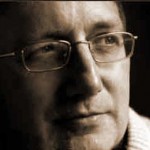UPDATE Almost two years after writing this post I finally managed to make contact with Robert Cooper at Freemason’s Hall in Edinburgh, and he could not have been more friendly and helpful, spending an hour with me on the phone going over various points and arranging to show me various material. I am not deleting the criticisms below as they are part of the record; but they are of course substantially altered.
There is a strange link between the warped mind of Anders Breivik and the biography of Alexander Burnes I am writing. Anyone who has read The Da Vinci Code or The Holy Blood and the Holy Grail, knows the (dubious) story of a continued descent of the Knights Templar through the rites of Scottish Freemasonry (the Da Vinci Code, of course, finishes in Rosslyn Chapel in Scotland). Anders Breivik’s “Templar” manifesto, his signing himself as “Andrew Berwick” and his posing in Masonic costume all indicate he was influenced by this stuff.
Well, that story of the Scottish Freemasons inheriting the rites and knowledge of the Knights Templar was first popularised by Alexander Burnes’ brother, James Burnes, in his “Sketch of the History of the Knights Templar” (Edinburgh, 1840). James Burnes went on to become “Grand Precepteur de l’Ordre Souverain Du Temple” and “Grand Preceptor of the British Langue of the Sovereign and Illustrious Order of St John of Jerusalem”. The source for this is Robert Bigsby in his Memoir of the Illustrious and Sovereign Order of St John of Jerusalem, (Irongate, 1869).
James Burnes’ History of the Knights Templar describes himself as the Masonic “Grand Prior of India.” This is undoubtedly true – there are plenty of other sources. He also really was, as he claims, a Knight of Aquitaine and of the Royal Guelphic Order of Hanover and Saxe Coburg, created by reigning monarchs who were also masons. Bigsby says James Burnes was “best remembered for his zealous exertions in promoting Freemasonry in Scotland and India.” He apparently reached number two in the Scottish freemason structure, though I have yet to find his title.
His brother Alex Burnes, the subject of my biography, was also a zealous freemason and some sort of search for ancient masonic knowledge linked to Alexander the Great was a sub-theme of his wanderings in Central Asia – and links in of course to Kipling’s exploration of the same masonic themes in The Man Who Would Be King, which is at least in part based on Alex Burnes. Freemasonry was a fundamental part of the Burnes family’s life – Alex and James’ great-uncle, the poet Robert Burns was famously a freemason, and their are more Burnes (eight) in the list of members of the Knights of St John which Bigsby publishes, than any other family.
I genuinely have no agenda, pro or anti Freemason (to be honest I view them as harmless and a bit silly), in digging up this old stuff. But I hope that the above explains why I cannot leave this aspect out of a biography of Alexander Burnes. Yet I have contacted in writing the masonic organisations in Scotland and in India, and the Order of St John, to ask if they have any records relevant to James and Alexander Burnes. The Scottish Masons claim never to have heard of the Burnes, – that cannot be true – while the others have not replied to my letters.
They can hardly be surprised people think ill of them if they are so secretive and unhelpful. I am afraid their new (and I am sure unwelcome) association with Breivik will make them even more paranoid and hostile to anybody researching this stuff.
